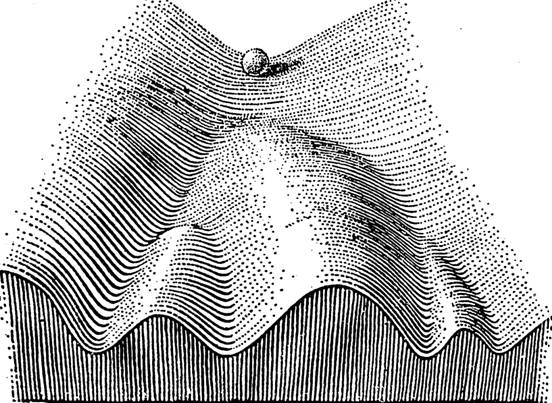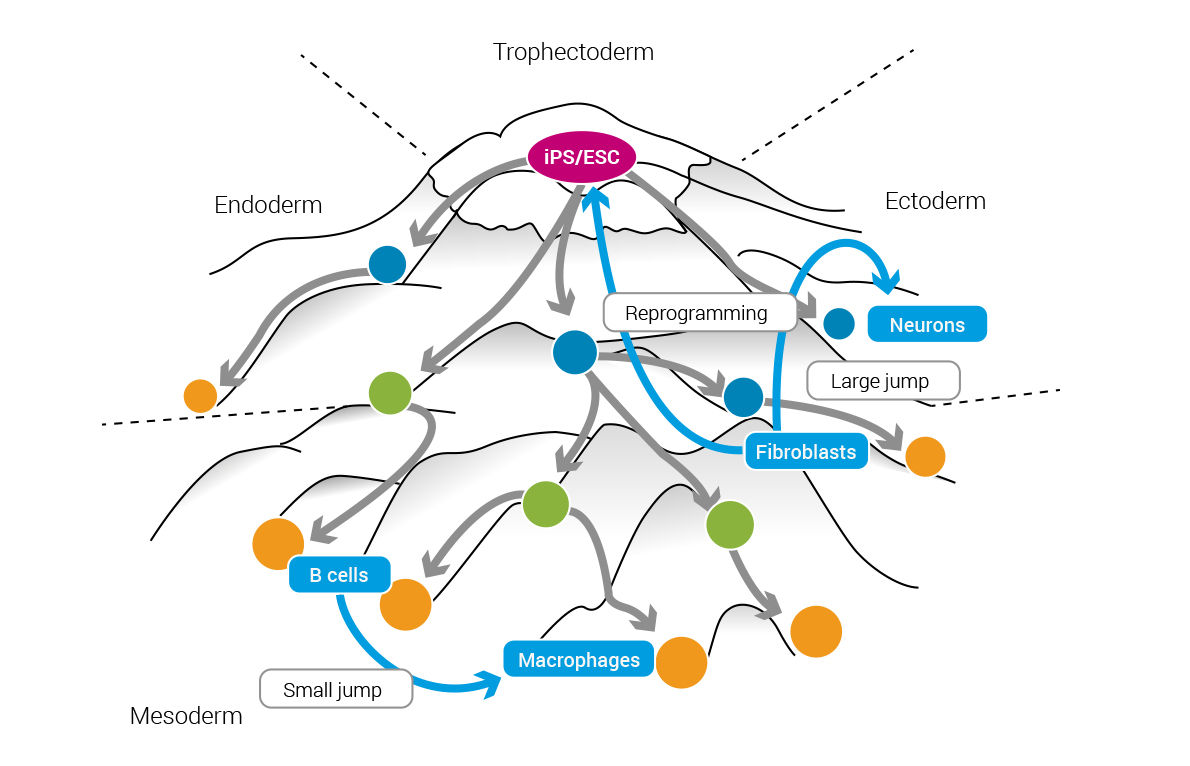Conrad Hal Waddington
- * born Nov. 8, 1905 Eversham, England
- 1926 Graduated in geology at Sidney Sussex College Cambridge
- From 1926 Studied philosophy, modern art and Morris dancing; studied
Hans Spemann's research on amphibious embryos
- 1930 Specialized in embryology
- 1935 Cambridge ScD (Doctor of Science)
- 1936 Fellow of Christ's College Cambridge
- 1936 Albert Brachet Prize in embryology
- 1947 Professor and head of the Institute for Animal Genetics at the University of Edinburgh
- 1957 Published the essay on The Strategy of the Genes
- † 26.09.1975 Edinburgh, Scotland
Epigenetic landscape

Illustration: Epigenetic landscape as original
Source: Website Dave Tang
Waddington's original definition of epigenesis referred to changes during cell differentiation and the way in which the ability of cells to transform becomes limited with time. He was particularly interested in the stabilization of stages during the development process. To illustrate these processes, he used the metaphor of the epigenetic landscape and presented it in a model: The cell – represented by a ball – rolls through valleys of a hilly landscape and strives to reach the point of minimal energy expenditure. Waddington described how these developmental paths are influenced by genes but are also characterized by environmental factors. Because of the valley walls between the individual paths, the course cannot be easily changed. However, induction from outside can be strong enough to overcome a valley flank in the epigenetic landscape (large jump). The ball then enters an adjacent valley, development is channeled differently. The concept remains valid until today, even though epigenetics has changed its definition and today refers to various regulatory options that can influence the activity of genes independently of the DNA sequence.

Illustration: Landscape of development, differentiation and reprogramming: Four germ layers, trophectoderm, ectoderm, mesoderm and endoderm, in which cells mainly develop, are shown. Transitions (jumps) when cells change into cells of another cotyledon or put into the "initial state" (reprogramming) are difficult to achieve. Source: EuroStemCell: Cell replacement therapies: iPS technology or transdifferentiation?
Search terms: Epigenetic landscape, channeling, buffering and genetic assimilation, EvoDevo-Research (evolution and development)